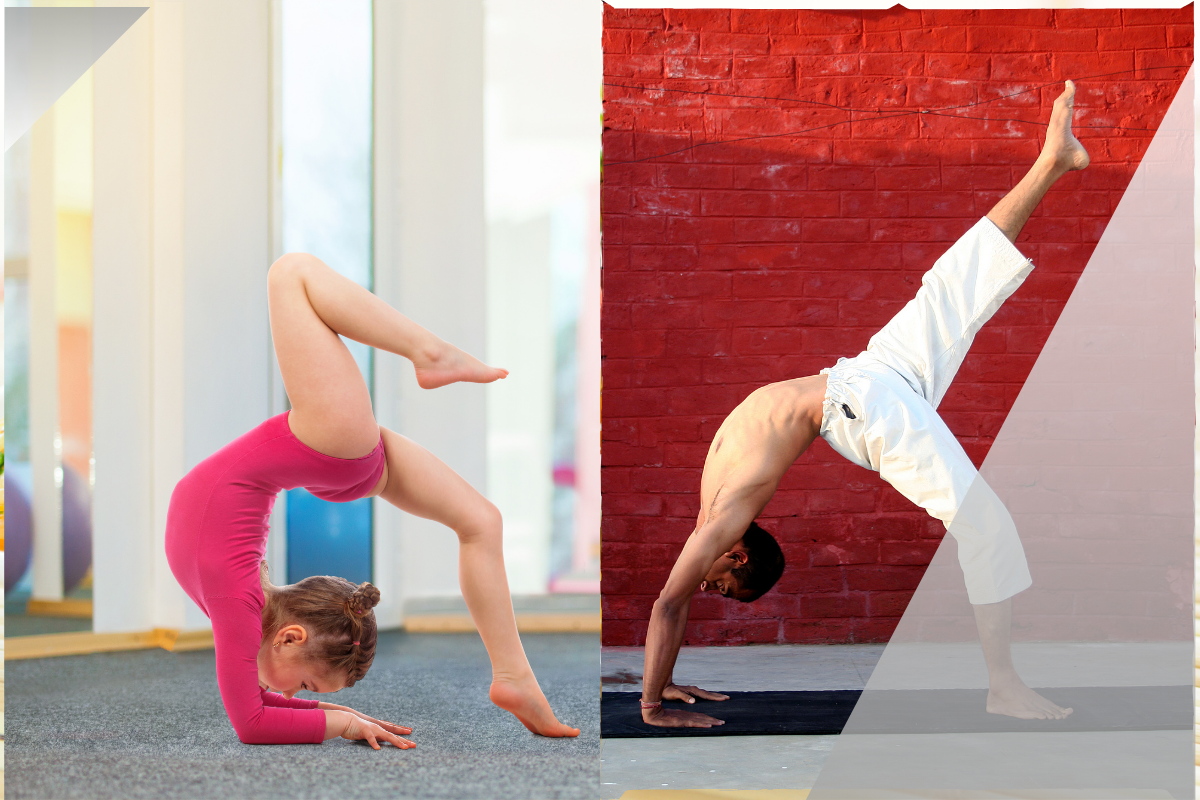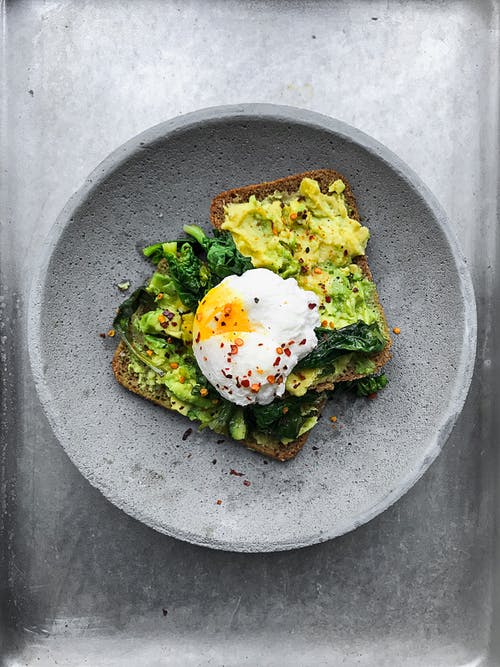If you’ve ever wondered why kids (or when you used to be younger) seem to master gymnastics, yoga, and flexibility skills so quickly or why entering a yoga practice as an adult feels so challenging, you’re not alone! The differences in how youth and adults develop strength and flexibility, influenced by gender and biological changes, can explain a lot. Whether you’re a parent of young athletes or an adult stepping into yoga for the first time, understanding these differences can help guide your training approach and expectations.
Connective Tissue: The Foundation of Flexibility
Connective tissues, such as tendons, ligaments, and fascia, are critical for determining our range of motion and flexibility. These tissues are composed mainly of:
- Collagen: Provides strength and stability, limiting excessive stretching.
- Elastin: Provides elasticity, allowing tissues to stretch and then return to their original shape.
The ratio of collagen to elastin and the structure of these tissues differ based on age, gender, and hormonal influences.
Youth vs. Adults: Why Are Kids More Flexible?
Before puberty, boys and girls have similar levels of flexibility and strength due to high elastin content and minimal collagen cross-linking in their connective tissues. This natural flexibility explains why young children often excel in gymnastics, dance, and early yoga practice, showing off impressive feats of flexibility like splits or backbends with ease.
As we age, however, things change:
- Youth (Pre-Puberty): Both boys and girls have high joint laxity and naturally flexible connective tissues. Their ligaments and tendons are softer and more elastic, making movements like splits and backbends easier.
- Adolescence (Puberty Onset): The hormonal changes of puberty create distinct differences between males and females:
- Females: Increased estrogen and relaxin make connective tissues more elastic, maintaining flexibility. This makes it easier for adolescent girls to continue excelling in activities like yoga and gymnastics.
- Males: Rising testosterone levels increase muscle mass and collagen cross-linking, making connective tissues stiffer. While strength increases, flexibility often decreases unless targeted mobility exercises are incorporated.
Adults: Entering Yoga Practice Later in Life
For adults entering yoga or pursuing flexibility-focused activities like calisthenics, it can be a different story:
- Adult Males: Tend to have stiffer connective tissues due to increased collagen cross-linking and denser muscle mass from higher testosterone levels. This can make flexibility training more challenging, especially if they haven’t maintained regular stretching routines.
- Adult Females: Often retain more flexibility, particularly in the hips and lower back, due to ongoing effects of estrogen. However, without regular strength training, increased flexibility can sometimes lead to joint instability or hypermobility issues.
Structural Differences Between Genders and How They Affect Flexibility
Gender-based anatomical differences also influence flexibility:
- Hips: Females typically have a wider pelvis, providing a greater range of motion in hip movements like abduction and external rotation. Males, with a narrower pelvis and greater muscle density, may struggle with hip flexibility.
- Shoulders: Males often have broader shoulders and a larger shoulder girdle, which can limit their range of motion but enhance stability for strength-based skills like the planche. Females, with smaller and more mobile shoulder joints, may find shoulder stretches and overhead movements easier.
- Hamstrings and Spine: Females often have more flexible hamstrings and greater spine mobility, influenced by a higher elastin content and lower muscle stiffness. Males tend to have denser, stiffer hamstrings, requiring more dedicated stretching and mobility work.
How to Adapt Your Training: Youth vs. Adult Considerations
Understanding these differences can help tailor your training approach:
- For Youth (Pre-Puberty): Emphasize a mix of flexibility and strength training to build a strong, balanced foundation. Both boys and girls can benefit from gymnastics and yoga practices to enhance coordination and mobility.
- For Adolescents (Puberty Onset): Girls should focus on building strength to support their natural flexibility, while boys may need extra attention to maintaining flexibility as they gain muscle mass.
- For Adults Entering Yoga: It’s important to manage expectations. Adult males may need to incorporate more mobility work and dynamic stretching, while adult females may benefit from balancing flexibility with strength training to prevent hypermobility issues.
Key Takeaways: Why Flexibility Changes Over Time
If you’ve ever wondered why entering yoga practice as an adult feels so stiff or why kids seem to be naturally strong and flexible, remember these key points:
- Connective Tissues Change: Kids have more elastin and less collagen cross-linking, making them naturally more flexible.
- Hormonal Influences: Puberty introduces estrogen and relaxin in girls, increasing flexibility, while testosterone in boys increases muscle mass and stiffness.
- Structural Differences: Anatomical factors like pelvis width and shoulder size play a role in the range of motion differences between genders.
- Training Should Evolve: As we age, flexibility decreases without regular practice, and targeted training is key to maintaining or improving it.
Whether you’re guiding young athletes or stepping into yoga for the first time as an adult, understanding these changes can help you set realistic goals and create effective training plans. Embrace your journey, and remember that consistency and proper training can help anyone improve their flexibility and strength!
Call to Action:
Ready to start improving your flexibility and strength, no matter your age? Check out our schedule of classes for yoga and strength training programs designed for both adults. Contact us today to learn more!
Follow us on Instagram to keep up with all up to date changes coming in 2025!



